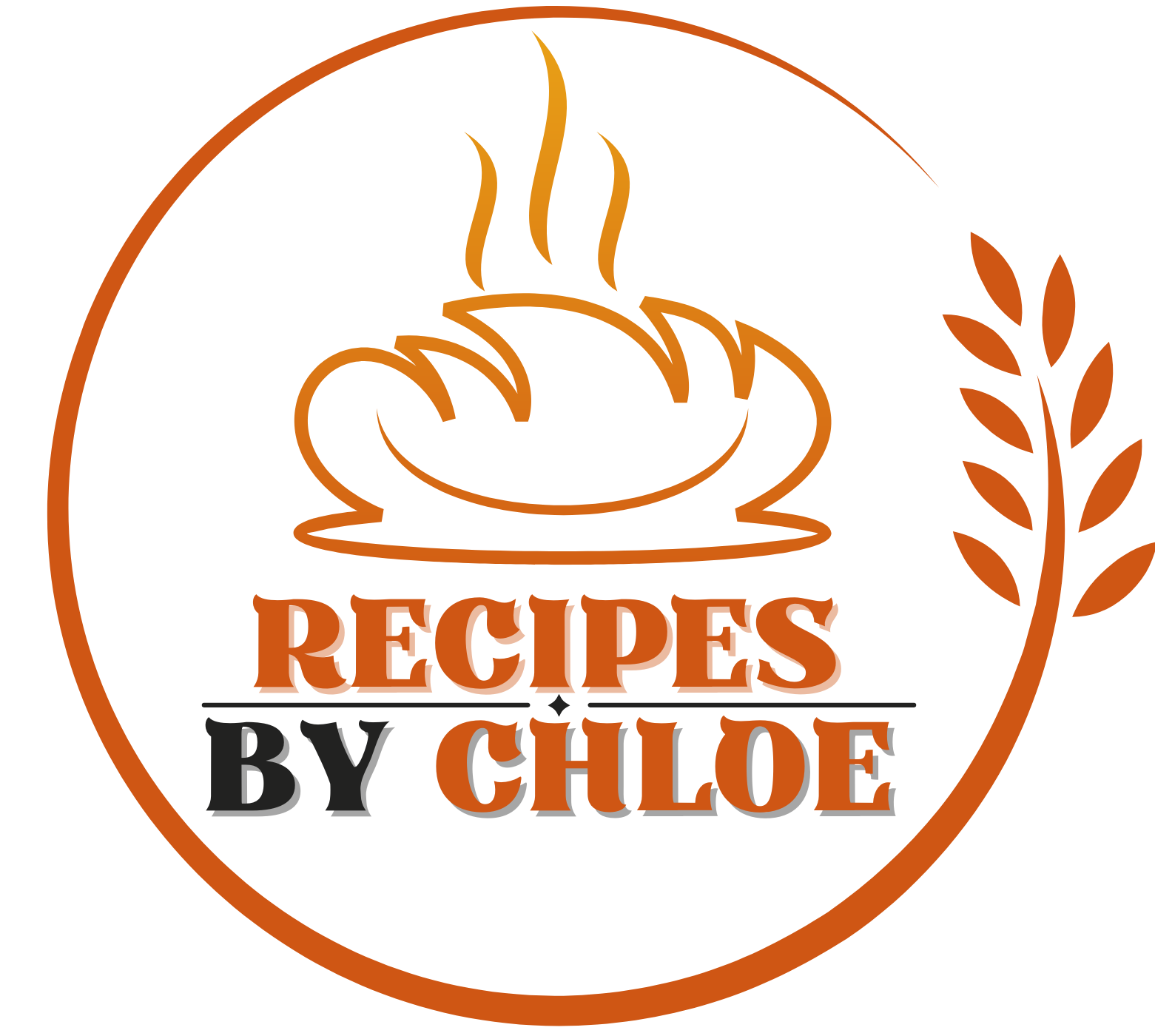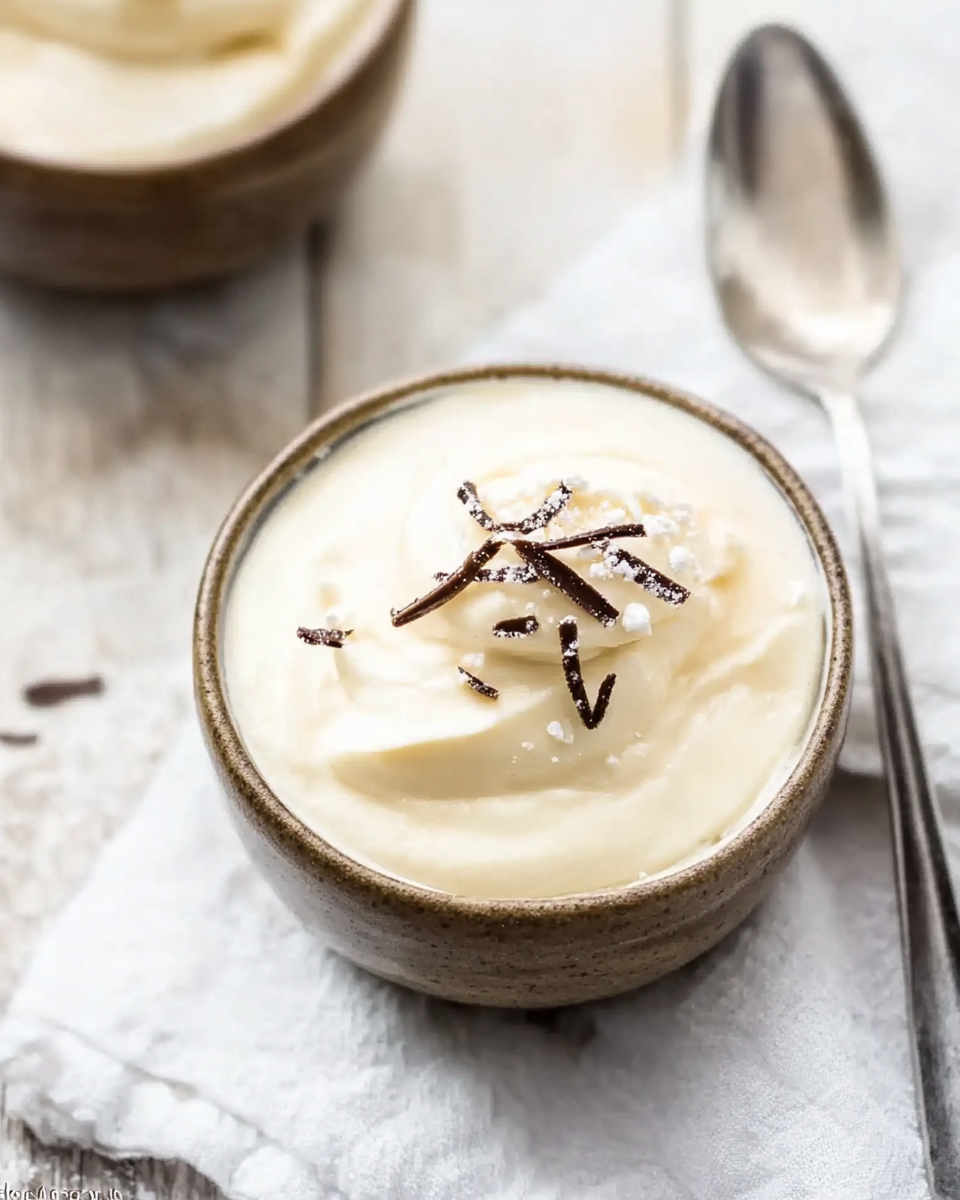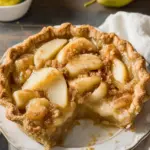Creamy Vanilla Pudding is a timeless dessert that combines simplicity with indulgence. This homemade version offers a rich, velvety texture and a deep vanilla flavor that surpasses any store-bought alternative. Perfect for both casual family dinners and elegant gatherings, this pudding is a versatile treat that appeals to all ages.
Full Recipe:
Ingredients
- 2 egg yolks, at room temperature
- 2 cups whole milk, at room temperature
- ½ cup granulated sugar
- ½ cup heavy cream
- 2 tablespoons cornstarch
- 2 tablespoons butter, softened
- 1 teaspoon vanilla extract
- ¼ teaspoon salt
Directions
- Prepare the Egg Mixture: In a mixing bowl, whisk together the egg yolks, vanilla extract, granulated sugar, salt, cornstarch, and softened butter until well combined. Set aside.
- Heat the Milk Mixture: In a medium saucepan over medium-low heat, combine the whole milk and heavy cream. Heat until bubbles start to form around the edges, then remove from heat.
- Temper the Egg Mixture: Slowly whisk ¼ cup of the hot milk mixture into the egg mixture to temper the eggs, preventing them from curdling.
- Combine and Thicken: Pour the tempered egg mixture back into the saucepan with the remaining milk mixture. Return to medium-low heat and cook, stirring constantly, until the mixture thickens, about 5 to 10 minutes.
- Strain and Cool: Remove the saucepan from heat and strain the pudding through a fine-mesh sieve into a bowl to ensure a smooth texture.
- Refrigerate: Place plastic wrap directly on the surface of the pudding to prevent a skin from forming. Refrigerate for at least 4 hours or overnight until fully set.
- Serve: Once chilled, serve the pudding as is or with your choice of toppings, such as fresh fruit, whipped cream, or a sprinkle of cinnamon.
Nutrients
Per serving (based on 4 servings):
- Calories: Approximately 300 kcal
- Protein: 6g
- Carbohydrates: 28g
- Fat: 18g
- Saturated Fat: 10g
- Cholesterol: 130mg
- Sodium: 150mg
- Sugar: 22g
History and Cultural Significance
Vanilla pudding has its roots in traditional custards and creams that have been part of Western cuisine for centuries. Custards date back to medieval Europe, where they were often served as a luxurious end to meals. Over time, as cooking techniques evolved and ingredients like cornstarch became more accessible, recipes adapted into quicker, more stable versions like pudding. The addition of vanilla as the dominant flavor added a fragrant and soothing note, elevating this humble dish to a beloved classic.
Vanilla pudding has remained a staple in many cultures because of its simple, comforting nature. It appears in countless variations worldwide—sometimes layered in trifles, used as pie fillings, or combined with fruit compotes. Its widespread appeal stems from the fact that it can be dressed up or down, catering to all occasions.
Flavor Profile and Texture
What makes creamy vanilla pudding so special is the interplay of texture and flavor. The pudding should be silky smooth and luscious, with a thick yet delicate consistency that melts in the mouth. This texture is achieved through the careful cooking of eggs, starch, and dairy, balancing thickening without curdling.
The vanilla flavor is the star—fragrant, floral, and slightly sweet. Good-quality vanilla extract or vanilla bean enhances the natural creaminess of the base, making the dessert feel luxurious and inviting. The sweetness is gentle enough not to overpower, allowing the vanilla to shine.
This harmonious blend of creamy texture and aromatic flavor makes vanilla pudding versatile for pairing with a range of toppings and accompaniments, from fresh berries to crunchy nuts or even a drizzle of caramel.
Nutritional Considerations
Creamy vanilla pudding, while indulgent, can also be enjoyed mindfully within a balanced diet. The dish is a good source of protein from eggs and dairy, which contributes to satiety and muscle maintenance. It also provides important micronutrients like calcium and vitamin D from milk, supporting bone health.
However, vanilla pudding does contain sugars and saturated fats, which means moderation is key. Depending on the recipe, the calorie content can be adjusted by altering the type of milk used or sugar quantities. For those seeking lighter options, versions made with low-fat milk or sugar substitutes can offer a guilt-free alternative without sacrificing too much flavor or texture.
Overall, vanilla pudding is a satisfying dessert that, when consumed as part of a balanced meal plan, can be both nourishing and indulgent.
Variations and Adaptations
One of the strengths of creamy vanilla pudding is how easily it can be adapted to suit different tastes, dietary needs, or creative twists. For example, incorporating vanilla bean seeds instead of extract delivers a more intense flavor and visual appeal with specks of black throughout the pudding.
For those avoiding dairy or eggs, vegan versions use plant-based milks like almond, coconut, or oat milk, combined with thickening agents like cornstarch or agar agar. These alternatives provide a similar creamy texture and can be flavored with natural vanilla extracts.
Flavor variations abound, including the addition of spices like cinnamon or nutmeg, or mixing in chocolate for a rich, decadent twist. The pudding can be layered with fruits, granola, or nuts to add texture and complementary tastes.
Serving Suggestions and Pairings
Vanilla pudding’s versatility extends to how it is served. It can be enjoyed on its own, chilled to perfection, or paired with an array of toppings to elevate the experience. Fresh berries such as raspberries, blueberries, or sliced strawberries add tartness and brightness that contrast beautifully with the creamy base.
Nuts like toasted almonds, pistachios, or pecans bring crunch and a toasty flavor, while a drizzle of caramel or chocolate sauce adds indulgence. For a more exotic twist, a sprinkle of toasted coconut or a few mint leaves can refresh the palate.
Vanilla pudding also works wonderfully as a component in layered desserts like trifles, parfaits, or alongside baked goods like shortcakes or cookies. Its smooth texture makes it an excellent base to complement textures and flavors in a composed dessert.
Making Homemade vs. Store-Bought
While ready-made vanilla puddings are widely available, homemade versions provide a superior sensory experience. The fresh preparation ensures the pudding has a rich, natural flavor free of preservatives and artificial additives common in store-bought products.
Making pudding from scratch also allows control over ingredients—adjusting sweetness, fat content, or vanilla intensity to personal preference. The act of cooking and stirring the pudding on the stovetop builds anticipation and satisfaction, resulting in a dish that feels crafted with care.
That said, store-bought puddings offer convenience and consistency, which can be suitable for busy lifestyles or quick desserts. However, many culinary enthusiasts find the extra effort in homemade pudding worthwhile for its authentic flavor and creamy texture.
Tips for Perfecting Creamy Vanilla Pudding
Achieving the perfect creamy vanilla pudding requires attention to technique. The key is slow and gentle cooking to avoid curdling the eggs while thickening the mixture. Tempering the egg yolks by gradually adding hot milk helps prevent scrambling and ensures a smooth custard.
Using fresh, high-quality ingredients like real vanilla extract or vanilla bean, whole milk, and fresh eggs enhances flavor. Straining the pudding after cooking removes any lumps, giving it that signature silky texture.
Chilling the pudding properly is essential to let it set and develop its full flavor. Covering the surface with plastic wrap prevents the formation of a skin, which can detract from the smooth mouthfeel.
Conclusion
Creamy Vanilla Pudding is much more than a simple dessert—it is a comforting, versatile classic that bridges generations and culinary traditions. Its rich yet delicate balance of flavor and texture makes it a beloved treat perfect for any occasion, from casual family dinners to festive celebrations.
With its roots in traditional custards and a flavor profile that has captivated taste buds worldwide, vanilla pudding continues to inspire adaptations and creative presentations. Whether enjoyed on its own or paired with fresh fruits and toppings, it delivers a satisfying experience that combines indulgence with simplicity.






